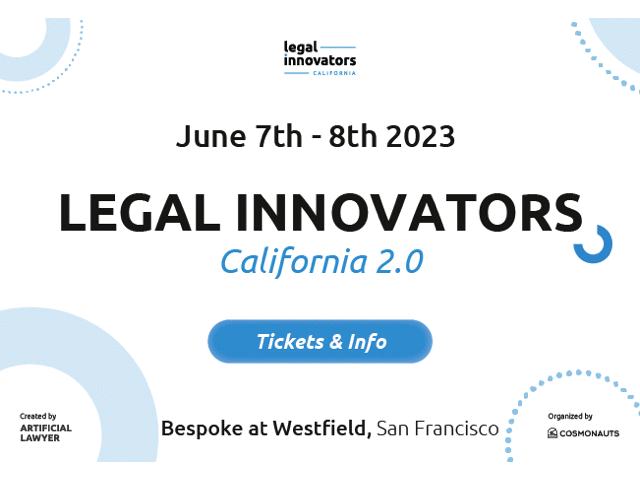
By Todd Smithline, CEO, Bonterms.
In the summer of 2021, Bonterms in San Francisco, and oneNDA in London, each released a new type of standard free-to-use NDA within weeks of each other. The launch dates and overlap were pure coincidence (a more common occurrence than you might think), but since then we’ve been cheering each other on and building the cornerstone for a movement that’s already changing commercial contracting for the better.
Recently Electra Japonas of oneNDA published a thoughtful piece in Artificial Lawyer on the question of ‘What’s a Standard?’. AL has graciously allowed us to join the conversation and give the perspective from the Bonterms side.
First, what’s a ‘Standard Agreement’?
Before we ponder what constitutes a ‘standard’, let us take a moment to define terms. At Bonterms we refer to our releases as ‘Standard Agreements.’ All Bonterms Standard Agreements are free to download, use and distribute (CC-BY-4.0) and, importantly, are implemented by the Cover Page.
This means the party information, deal terms such as confidentiality period or governing law (what we call ‘Key Terms’), and any additions to or modifications of the Standard Agreement itself (what we call ‘Additional Terms’), are stated on the Cover Page.
Bonterms offers a complete system of enterprise Standard Agreements: NDA, Cloud Terms, Service Level Agreement, Data Protection Agreement, and Professional Service Agreement (coming soon).
What’s the difference between oneNDA and a Bonterms Standard Agreement?
oneNDA operates the same basic way as a Bonterms Standard Agreement with the parties adding deal-specific ‘Variables’ (what Bonterms calls ‘Key Terms’) and signing. But, unlike in the Bonterms system, with oneNDA there is no option to modify or add to the underlying text itself (the ‘Additional Terms’ in Bonterms). So, very much by design, oneNDA is a take-it-or-leave it proposition. (Electra explains their thinking and the benefits they’ve seen in terms of adoption in excellent detail in her piece.)
Why does Bonterms allow changes?
Bonterms allows the parties to change the text of our Standard Agreements because while we’re very proud of how they read, we never want to assume we know better than the parties themselves as to what’s best for their transaction. This position was informed by my thirty years of practice and the judgment of our now 60-member Standard Agreements Committee. It also reflects the particular audience we’re drafting for: in-house counsel at a category-leading SaaS provider or F500 customer or a lawyer representing either in the technology transactions group of an Am Law 100 firm.
What do parties typically change in a Bonterms Standard Agreement?
As it turns out, not much! From what we’ve seen so far, most Bonterms NDAs get done with no changes beyond the Key Terms. And even when it comes to purchases of complex SaaS products using the Bonterms Cloud Terms, we see perhaps a page of Additional Terms, and those changes are so predictable we’ve been able to capture most in our cut-and-paste Toolkits. Importantly, however, our users tell us the mere ability to make changes establishes comfort in adopting our Standard Agreements in the first place.
So, what’s a ‘standard’?
Coming back to the original question, what is a ‘standard’? To get there maybe we should first ask, what’s a standard for?
From the Bonterms perspective, an effective contractual standard helps the parties get their deal done by framing the most important issues for clear discussion (in our case, on a Cover Page) while otherwise leveraging provisions that were designed to reflect best practices, meet the core needs of each party and be reasonably balanced between them.
Do standards need to be formal to be effective?
While perhaps not labeled as such, numerous informal ‘standards’ are enforced every day across enterprise procurement negotiations: net 30 days for payment, 12X fees paid as the default damages cap, service credits as the remedy for fluctuations in availability. These industry ‘standards’ arise and evolve organically, and while they may, of course, be modified from deal to deal, their mere existence provides a framework for facilitating agreement between any two parties.
How far can standards go?
Bonterms Standard Agreements take the notion of an industry standard to the next level with an entire agreement created from the collective wisdom of the in-house and law firm lawyers on our 60-member Standard Agreements Committee. Our objectives in drafting are always the same: reflect current best-practice, meet the core needs of each party while otherwise keeping things generally balanced between them and provide an easy way for the parties to make adjustments without losing the benefit of starting from a standard in the first place.
The market will decide
So, does oneNDA or a Bonterms Standard Agreement constitute a ‘standard’? On this one, you dear reader, whether you’re an in-house or law firm lawyer, contracts negotiator or revenue leader, get the final say. Check them out, give them a try and let us know what you think!
—
Main pic: Todd Smithline, CEO (left), and Chris Walker, Head of Product (right).
[ This is an educational guest post for AL by Bonterms. ]
—
